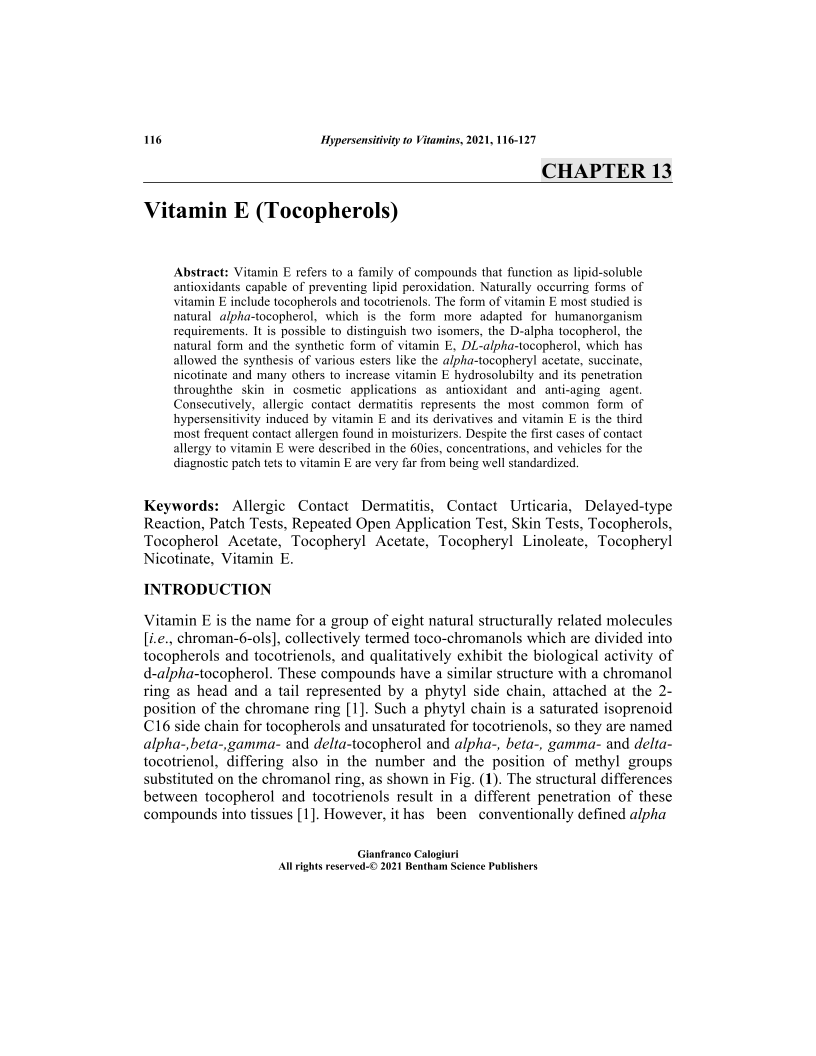Vitamin E (Tocopherols)

- By Gianfranco Calogiuri1
-
View Affiliations Hide Affiliations1 Department of Pneumology and Respiratory Diseases Hospital Vito Fazzi Lecce, Italy
- Source: Hypersensitivity to Vitamins , pp 116-127
- Publication Date: November 2021
- Language: English
Vitamin E (Tocopherols), Page 1 of 1
< Previous page | Next page > /docserver/preview/fulltext/9781681088921/chapter-13-1.gif
Vitamin E refers to a family of compounds that function as lipid-soluble antioxidants capable of preventing lipid peroxidation. Naturally occurring forms of vitamin E include tocopherols and tocotrienols. The form of vitamin E most studied is natural alpha-tocopherol, which is the form more adapted for humanorganism requirements. It is possible to distinguish two isomers, the D-alpha tocopherol, the natural form and the synthetic form of vitamin E, DL-alpha-tocopherol, which has allowed the synthesis of various esters like the alpha-tocopheryl acetate, succinate, nicotinate and many others to increase vitamin E hydrosolubilty and its penetration throughthe skin in cosmetic applications as antioxidant and anti-aging agent. Consecutively, allergic contact dermatitis represents the most common form of hypersensitivity induced by vitamin E and its derivatives and vitamin E is the third most frequent contact allergen found in moisturizers. Despite the first cases of contact allergy to vitamin E were described in the 60ies, concentrations, and vehicles for the diagnostic patch tets to vitamin E are very far from being well standardized.
-
From This Site
/content/books/9781681088921.chapter-13dcterms_subject,pub_keyword-contentType:Journal -contentType:Figure -contentType:Table -contentType:SupplementaryData105

